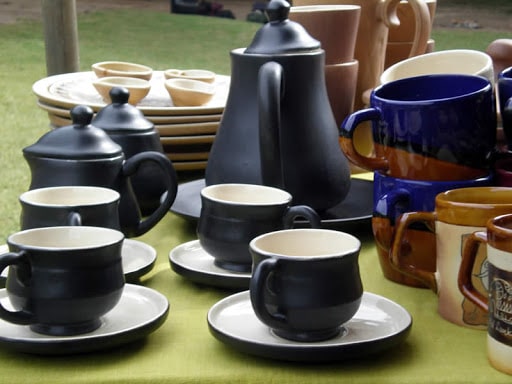Ceramics, pottery, earthenware, porcelain, stoneware, raku, turning, pigeon, kintsugi, plate or simply modeling… so many intriguing and too often misunderstood words that feed fantasies and curiosity. Immerse yourself in the fascinating world of pottery, discover the techniques and virtues of working with clay but also the portraits of those who make and are the profession today.
A little history lesson
Working the land has been omnipresent in the daily life of humanity for thousands of years. No wonder that each of us has a very special connection with this material. It is with the use of fire in the Neolithic period that the discipline was revolutionized and that we pass from the fragile sun-dried earthenware containers to the robust terracotta that we know today!
Diving into the techniques
There are 5 main techniques to tame the earth. Each one is adapted to a certain type of realization and does not necessarily provide the same sensations.
Modeling : Modeling consists in making a ball of clay which is then shaped with finger pressure. It is often referred to as the pinch technique. One of the first exercises performed is often the famous pinched bowl. Very relaxing, the technique of modeling invites you to get in touch with the material gently, to give it shape with patience and to feel the contact of a relatively dense clay.
Turning: This is the technique often considered as the most advanced. It has revolutionized pottery by making it possible to obtain much freer shapes. The potter’s wheel consists of a girelle, a circular plate which turns on itself and on which you have to center a clod of earth. This centering step is crucial to avoid that your realization ends up on the ground or in the face of your neighbor’s workshop with the centrifugal force!
The Colombin: The technique of the Colombin allows to quickly obtain large (even very large!) pieces with beautiful volumes. How does it work?The colombin is a long, relatively narrow, earthen coil that you obtain by rolling the earth on a table. You then assemble this pigeon to elaborate your creation. If you wish to obtain a very large piece, you can then assemble several pigeons.

The Plate: Working with the plate has many intriguing similarities to the work of a baker! So, put on your toque as you will first make a baking sheet with a rolling pin (similar to a rolling pin) before cutting out the shapes you want from the sheet. Working with clay on the baking sheet brings a feeling of calm and allows you to quickly make large pieces, such as dishes and plates, which you can then.
Moulding / Casting: This is one last technique that is very different from the others. Here, the earth is no longer compact but liquid, it is called in this state barbotine (it is a mixture of earth and water).
In order to define the shape of the piece, you use a plaster mould in which you introduce the slip that fits the walls. Once your molded piece is dry thanks to the evaporation of the water, you can unmold it with ease. After a step of shaping, your creation is ready.
Firing and glazing
Each clay has its particularities and constraints in terms of cooking. The pottery and ceramics are fired in two stages. The first firing lasts about 8 hours and allows us to obtain what is called the “cookie”. The piece can then be decorated before being immersed in glaze baths and put back into the kiln for a second firing at a higher temperature. All these firings take place between 850°C and 1350°C. Earthenware remains porous after firing while stoneware and porcelain become completely vitrified and waterproof.
The glazing phase is also very complex, glazes react differently to firing and knowing how to compose your glaze is an art that requires great knowledge of chemistry.
The different lands
A final key component in ceramics is the choice of clay. There are many varieties, ranging from fine clay, dedicated to small shaped pieces, to chamotte clay or paperclay, which is a clay loaded with cellulose fiber allowing great freedom in sculpture.
The earthenware with which you are brought most of the time to work are stoneware, earthenware and porcelain. Porcelain will bring you a touch of a unique softness and a brilliant whiteness. Its transparency is frequently used for lamps, photophores or lampshades. Stoneware brings an infinite range of colors and you can learn how to work with white stoneware as well as black stoneware .
The ancestral dimension of the ceramist’s craft, the long time required to transform the clay, and the relationship with fire make pottery the symbol of this need for a meaningful practice. A sincere and deep need to restore a balance between mind and body, as allowed by yoga and meditation.
Clay imposes its rhythm, it is a sensitive material where the incompressible drying and firing times force urban people in a hurry to acquire humility and rigour. It is the whole body that is mobilized by working the clay.

